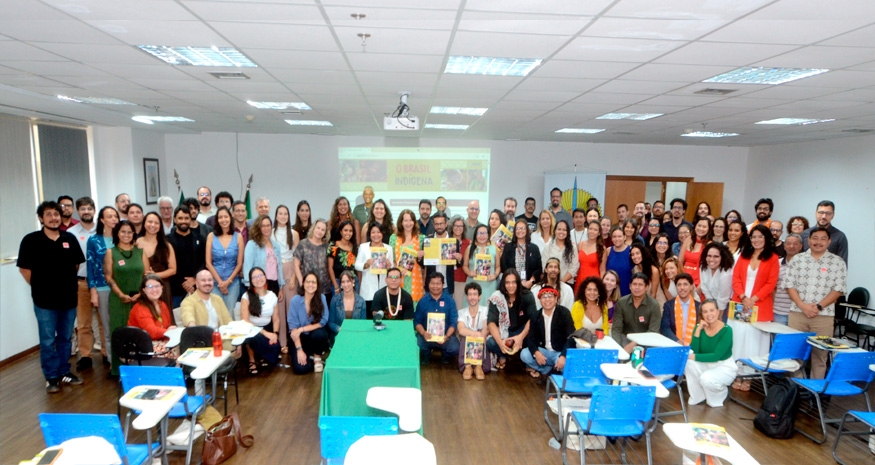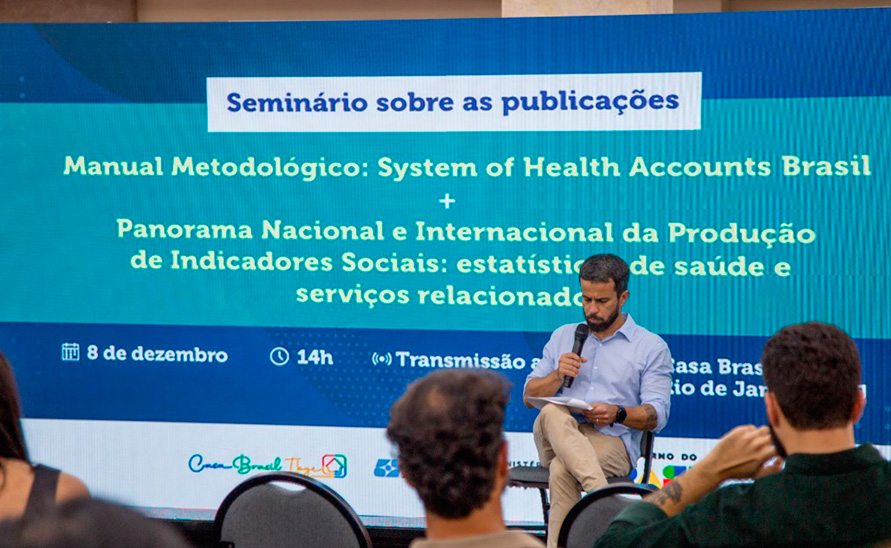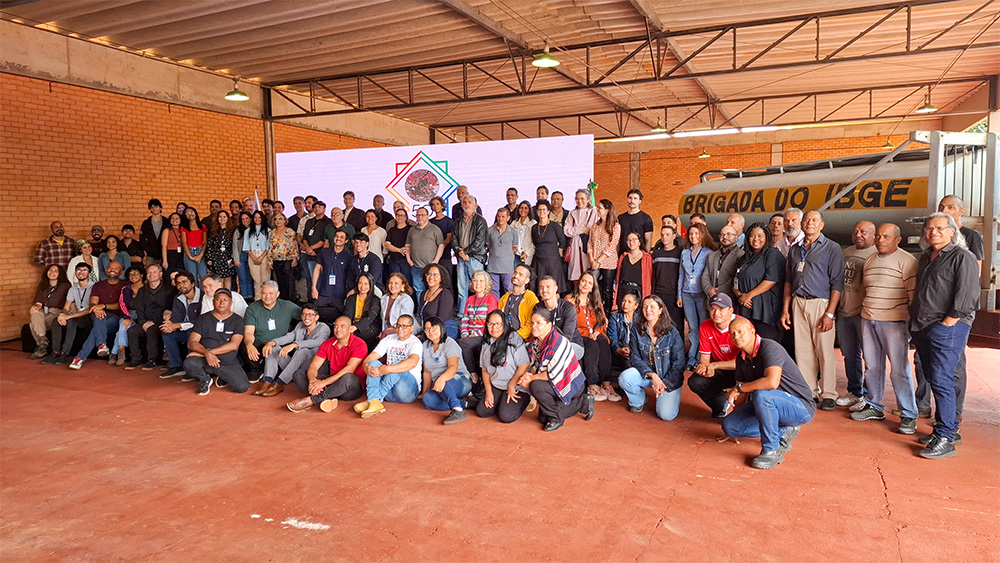PNAD Contínua Mensal
Unemployment rate reaches 5.8% in the quarter ended June, lowest level in the time series
July 31, 2025 09h00 AM | Last Updated: August 05, 2025 04h08 PM

The unemployment rate in Brazil for the quarter April-June 2025 was 5.8%, with a drop of 1.2 p.p. from the quarter January-March 2025 (7.0%) and a drop of 1.1 percentage points (p.p.) against the same quarter a year ago (6.9%). That is the lowest unemployment rate in the time series initiated in 2012. Record figures were also recorded by employment status (58.8%, which reached the quarter September-November 2024) and workers with a formal contract in the private sector (which reached 39.0 million). The discouraged population also stood out, with drops of 13.7% from the quarter ended May and of 14.0% from the same period a year ago. Information can be found in the Monthly Continuous PNAD released today (31) by the IBGE.
The IBGE has also published the reweighted figures of the Monthly Continuous PNAD time series. Reweighting of the survey in 2025 considers total population figures in the Population Projections of 2024, which encompass results from the latest Population Census (2022). Additional information is available here in the Technical Note 02/2025.
“The sharp growth in the employed population during the quarter influenced several records in the time series, including the lowest vacancy rate," explains Adriana Beringuy, coordinator of Household Sample Surveys.
The composite underutilization rate (the percentage of unemployed population, time-related underemployed population and those in the potential workforce in relation to the expanded workforce) was 14.4%, a 1.5 percentage point drop against the previous quarter (15.9%). Compared to the same quarter in 2024, there was also a 2.0 percentage point decrease.
From April to June 2025, approximately 6.3 million persons were unemployed in the country. Compared to the previous three-month period (January to March 2025), in which 7.6 million persons were unemployed, this indicator fell 17.4%, equivalent to a decrease of 1.3 million persons. Compared to the same quarter last year, when there were 7.4 million unemployed persons, there was a 15.4% decrease, representing a reduction of 1.1 million unemployed persons in the workforce.
The number of employed persons in the quarter ended June this year was approximately 102.3 million, an increase of 1.8% from the previous quarter. Against the quarter ended June 2024, when there were 99.9 million employed persons in Brazil, there was a 2.4% increase (2.4 million persons). The employment rate (percentage of employed persons in the working-age population), in turn, reached 58.8%, an increase of 0.9 percentage points from the January-March 2025 quarter (57.8%). Against the same quarter a year ago (57.8%), this indicator showed a positive change of 1.0 percentage points. The employment rate in the quarter ended June 2025, thus, equaled the record in the time series, hit in the moving quarter September-November 2024.
Informality rate was the second lowest and employment with a formal contract hit a recod figure
The informality rate (proportion of informal workers in the employed population) was 37.8%, corresponding to 38.7 million informal workers. This index was lower than that recorded both in the previous moving quarter (38.0%) and in the same quarter of 2024 (38.7%). The informality rate of April-June 2025 is only higher than that observed in the same quarter of 2020 (36.6%). The drop in informality occurred despite a 2.6% increase in the number of workers without a formal employment contract (13.5 million), followed by a 3.8% increase in the number of self-employed workers with a CNPJ (256.000) in the quarterly comparison, and remained stable in the annual comparison. It is worth noting that the number of employed persons with a formal employment contract in the private sector hit a record: 39.0 million, a result (0.9%) higher than that recorded in the previous quarter and a 3.7% increase against the same period last year.
The number of discouraged workers in the quarter ended June (2.8 million) reached its lowest level since 2016. There were drops of 13.7% against the January-March 2025 quarter and of 14.0% against April-June 2024, when there were 3.2 million discouraged workers in Brazil.
Employment increased only in Public administration, defense, social security, education, human health, and social services
Of the ten groups of activity surveyed by Continuous PNAD, only Public administration, defense, social security, education, human health, and social services registered employment increase from the previous moving quarter (January-March 2025). The others showed no significant change.
According to Adriana Beringuy, "the significant growth in Public administration, defense, social security, education, human health, and social services was concentrated in the Education segment." The number of workers in the public sector (12.8 million), expanding both in the quarter (5.0%) and in the year (3.4%), set a record in the survey's time series.
Against the April-June 2024 quarter, five groups increased their workforce: General industry (4.9%, or 615 thousand), Trade, repais of motor vehicles and motorcycles (3.0%, or 561 thousand), Transportation, storage, and mailing (5.9%, or 331 thousand), Information, communication, and financial, real estate, professional, and administrative activities (3.8%, or 483 thousand), and Public administration, defense, social security, education, human health, and social services (3.7%, or 680 thousand). There was no significant change in the other groups.
Average earnings and wage bill of workers also reached record figures
The average monthly real earnings for all jobs reached R$3,477 in the April-June 2025 quarter, a record increase. This represented a 1.1% increase compared to the January-March period of that year, and a 3.3% increase compared to the same quarter of the previous year. The total real earnings (the sum of all workers' compensation) reached R$351.2 billion, also a record, rising 2.9% in the quarter, an increase of R$9.9 billion, and increasing 5.9% (an increase of R$19.7 billion) in the year.
“The record result for total earnings is a consequence of the significant expansion in employment in the quarter, followed by increase in the average real earnings of workers," Adriana observes.
More about the survey
Continuous PNAD is the main instrument to monitor workforce in Brazil. Every quarter, nearly two thousand interviewers integrated to the data collection network of more than 500 IBGE branches cover about 3,500 municipalities located in the 27 Federation Units of the country, corresponding to 211 thousand households surveyed in Brazil. continuous PNAD is the main survey on workforce in Brazil. Its sample encompasses 211 thousand housing units over 3,500 municipalities, which are visted every quarter. Nearly two thousand interviewers work in the survey, integrated with more than 500 IBGE branches in the entire country.
Due to the Covid-19 pandemic, the IBGE implemented data collection by telephone on March 17, 2020. In July 2021, the data collection became face-to-face once again. The identity of the interviewers can be confirmed at the Answering the IBGE website or through the Call Center (0800 7218181), and their ID numbers can be requested by the informants.
See PNAD data on Sidra. The next release of the Continuous PNAD, relative to the quarter ended July, will be on August 29.




















